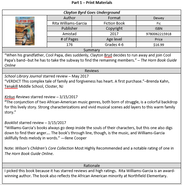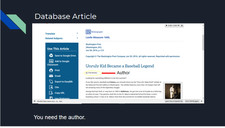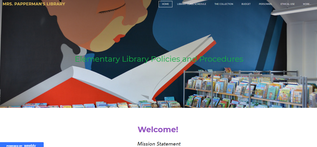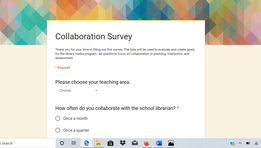Standard 5: Program Management and administration
Candidates plan, develop, implement, and evaluate school library programs, resources, and services in support of the mission of the library program within the school according to the ethics and principles of library science, education, management, and administration.





